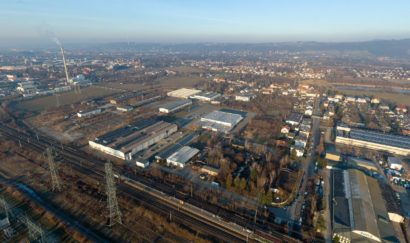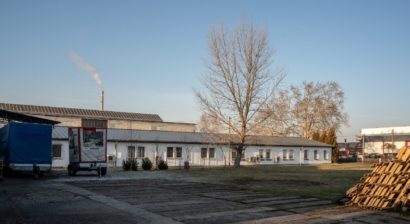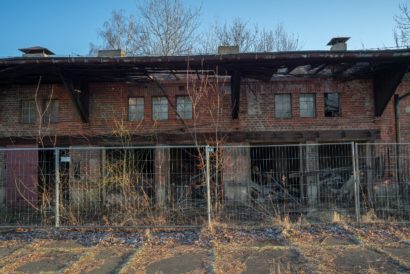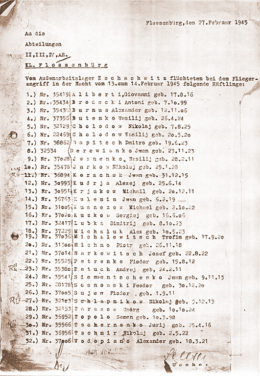Zschachwitz Subcamp
Mid-October 1944 – end of April 1945
![]()
Aerial view of the former MIAG-grounds in Zschachwitz, 2019 (Flossenbürg Concentration Camp Memorial / Photo: Rainer Viertlböck). The former camp grounds can be seen in the foreground on the right.
![]()
Former MIAG-Barracks in Zschachwitz, 2019 (Flossenbürg Concentration Camp Memorial / Photo Rainer Viertlböck).
![]()
Former factory grounds in Zschachwitz, 2019 (Flossenbürg Concentration Camp Memorial / Photo: Rainer Viertlböck)
![]()
List of prisoners who had escaped Zschaschwitz, February 27, 1945 (Bundesarchiv Berlin)
-
Prisoners
Initially 404 Jewish prisoners arrived from the Płaszow concentration camp; except for two Germans and three Hungarians, they were all Polish. From the subcamp Passau II of the Mauthausen concentration camp, 327 prisoners arrived, from Flossenbürg 272, from Auschwitz twenty.
-
Of them 22 were Russian, 187 Polish, 99 French, 29 Italian, with the others coming from a ten other countries. In December 1944, 1,000 prisoners were registered.
-
Forced labor and quarters
The prisoners were forced to manufacture for the Mühlenbau und Industrie AG (MIAG) assault guns and light tank destroyers, as well as engine parts for tanks.
-
They were quartered on the first and second floor of the factory building. Food rations were gravely insufficient, while the German prisoner functionaries were notorious for their violent behavior.
-
Guards
41 guards. Detail leader Alois Gröger was replaced at the turn of the year 1944/45 by Johann Baptist Köhler, possibly due to the numerous escape attempts undertaken by the prisoners.
-
Death toll
At least 80 deaths, as well as an unknown number of fatalities resulting from the air raids on Dresden.
-
Disbanding of the camp / end of the war
The subcamp was disbanded at the end of April. The prisoners capable of walking were forced to march to Leitmeritz. The remaining prisoners were transported by train in the direction of Bohemia.
-
The majority of the survivors were presumably liberated at the beginning of May in Theresienstadt.
-
Commemoration
At the entrance of the former company there is a memorial plaque.



